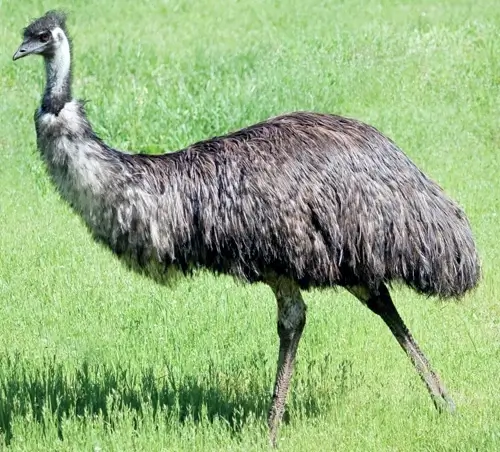Introduction
Sydney emus have long since been lost to our public. At one time, they filled the Sydney basin. There is a suburb at the foot of the Blue Mountains named after the large number of emus that roamed the area – Emu Plains. They are one of Australia’s most iconic and unique avian species. These flightless birds continue to capture the imagination of people around the world with their distinctive appearance, quirky behaviour, and remarkable adaptability to the harsh Australian environment. In this article, we’ll delve into the fascinating world of emus, exploring their biology, habitat, behaviour, and their place in Australian culture.
Emu Biology
Emus are the second-largest living birds globally, surpassed only by the ostrich. Adult emus reach an impressive height of up to 1.8 metres and weigh anywhere from 30 to 70 kilograms. One of their most striking features is their distinctive bluish-grey plumage. This provides excellent camouflage in their native habitats. Their long necks and legs, powerful beaks, and sharp claws help them in their environment. One interesting fact, is that unlike most birds (apart from ostriches and ducks), they have a penis. Most birds just use their cloaca for both digestive waste and reproduction.
Habitat and Range
Emus are native only to Australia and are primarily found in the vast, open landscapes of the continent. They are most commonly associated with the arid, semi-arid, and grassland regions of Australia. However, we find them in a variety of habitats, including forests and coastal areas. The adaptability of emus allows them to thrive in a wide range of conditions, from the scorching deserts of the interior to the coastal eucalyptus forests. Whilst we no longer find Sydney emus running wild in the Sydney basin, we search for them not far from Sydney.
Behaviour
We know emus for their interesting behaviour, which set them apart from other birds. Some notable aspects of their behaviour include:
- Nomadic Lifestyle: Emus are nomadic birds, often moving in search of food and water. They can cover long distances in search of these resources, and their wanderings can span hundreds of kilometres.
- Diet: Emus are omnivores, with a diet that consists of a wide range of foods, including fruits, plants, insects, small mammals, and even small reptiles. Their diet varies based on the season and food availability.
- Breeding: Breeding season typically occurs during the Australian spring (September to December). Emus lay large, dark green eggs and the male takes on the primary responsibility of incubating the eggs and caring for the chicks after hatching.
- Remarkable Speed: Emus are incredibly fast runners, capable of reaching speeds of up to 50 km/h. This speed is an essential defense mechanism against predators.
Cultural Significance
Emus hold a special place in Australian culture, both historically and today. The emu has been featured on the Australian coat of arms since 1912, symbolising the nation’s progress (they cannot walk backwards) and the country’s unique wildlife. Aboriginal Australians regard emus as an important source of food and materials, using their feathers and eggs in various ways. Emus are a subject of Indigenous Dreamtime stories, highlighting their cultural significance.
Emus in Conservation
Although emus are not a threatened species, their populations face some challenges due to habitat destruction and hunting. Conservation efforts aim to protect their natural habitats and ensure the preservation of these remarkable birds. Understanding the importance of emus in maintaining the balance of Australia’s ecosystems is crucial to their long-term survival.
Conclusion
Emus are more than just quirky-looking flightless birds. They represent a unique part of Australia’s natural heritage, both in their biology and cultural significance. The adaptability of emus to diverse environments and their distinctive behaviors make them a symbol of Australia’s rugged landscape. As we continue to learn about and appreciate these remarkable creatures, we can also contribute to their conservation and the protection of their habitats, ensuring that emus continue to roam the Australian outback for generations to come. Travel Ideology can search for Sydney Emus on demand. Because we have less than a 100% chance of finding them, this is something that we need to discuss first – Please contact us.


About the author